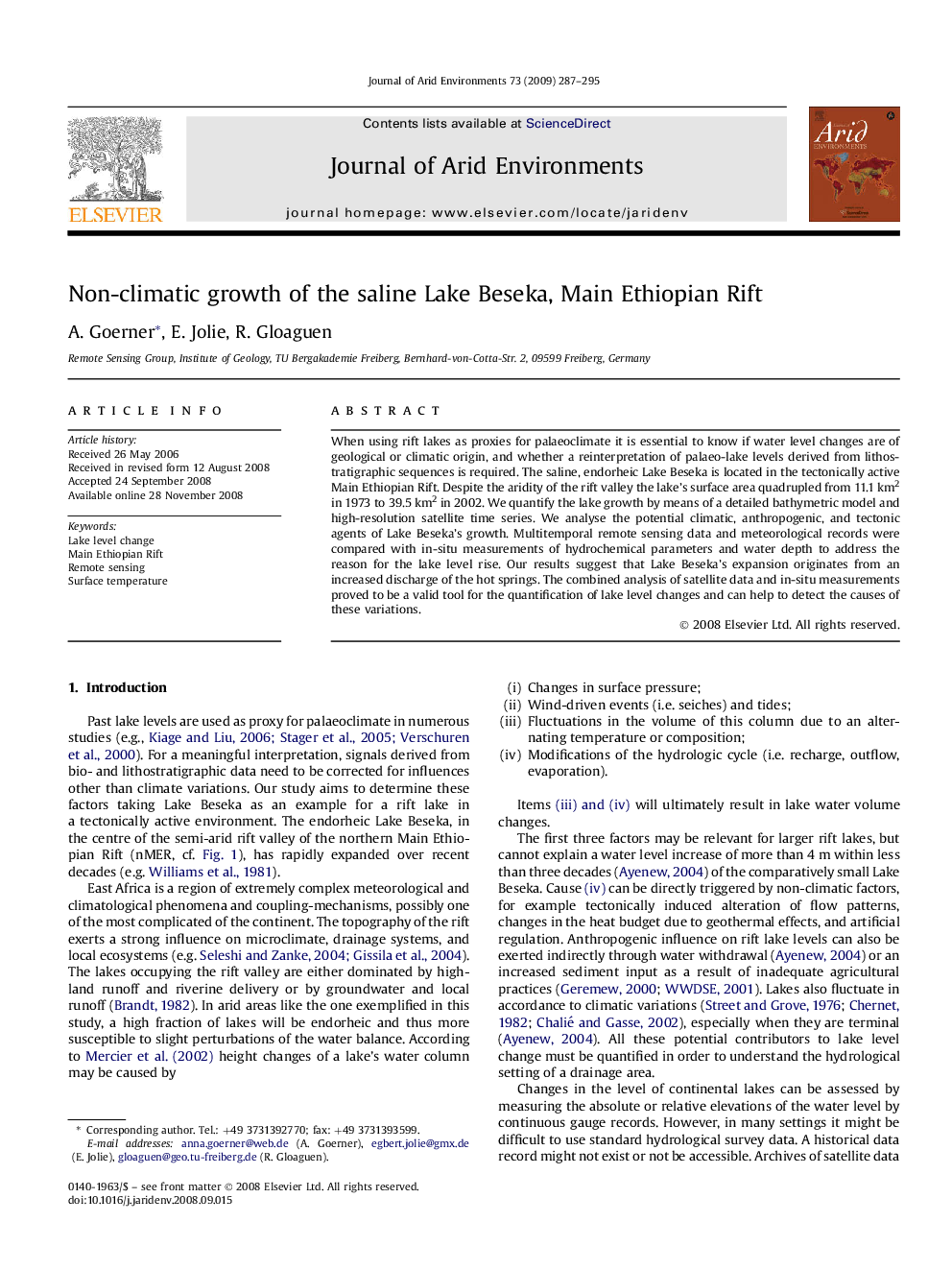| Article ID | Journal | Published Year | Pages | File Type |
|---|---|---|---|---|
| 4393875 | Journal of Arid Environments | 2009 | 9 Pages |
When using rift lakes as proxies for palaeoclimate it is essential to know if water level changes are of geological or climatic origin, and whether a reinterpretation of palaeo-lake levels derived from lithostratigraphic sequences is required. The saline, endorheic Lake Beseka is located in the tectonically active Main Ethiopian Rift. Despite the aridity of the rift valley the lake's surface area quadrupled from 11.1 km2 in 1973 to 39.5 km2 in 2002. We quantify the lake growth by means of a detailed bathymetric model and high-resolution satellite time series. We analyse the potential climatic, anthropogenic, and tectonic agents of Lake Beseka's growth. Multitemporal remote sensing data and meteorological records were compared with in-situ measurements of hydrochemical parameters and water depth to address the reason for the lake level rise. Our results suggest that Lake Beseka's expansion originates from an increased discharge of the hot springs. The combined analysis of satellite data and in-situ measurements proved to be a valid tool for the quantification of lake level changes and can help to detect the causes of these variations.
